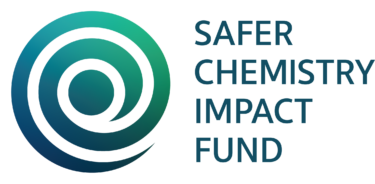Home – Case Studies – Developing Impact Measurement Metrics for the Safer Chemistry Impact Fund
Developing Impact Measurement Metrics for the Safer Chemistry Impact Fund

Home – Case Studies – Developing Impact Measurement Metrics for the Safer Chemistry Impact Fund

The Safer Chemistry Impact Fund (the Fund) was established to accelerate the transition from hazardous chemicals to safer alternatives. Within the next five years, it aims to target four consumer-facing supply chains, such as auto, electronics, and apparel, to embed safer chemistry metrics and tools. The Fund was fiscally sponsored by the Windward Fund, with initial investment from Apple and Google. It will fund non-profit initiatives to identify, scale, and measure impact solutions to embed safer chemistry across supply chains as the standard operating system.
The Fund has four components: Data Trust, Impact Programs, a Knowledge Hub and Metrics to measure the transition to safer chemistry. The Metrics are essential to achieving the mission and will play a key role in the Fund.
Goals for the metrics development project included:
The Fund engaged Anthesis to conduct work on understanding the landscape around chemical management and safer chemistry adoption and measurement. Anthesis led a series of stakeholder engagement exercises, including interviews and both in-person and virtual workshops, and developed metrics to measure progress towards and the impact of adopting preferred or low-concern chemicals.
Key outputs:
Key findings:
Businesses can set clear goals for reducing chemical hazards, track their progress, and communicate their achievements to stakeholders. The metrics will also facilitate collaboration across supply chains, driving the development and adoption of safer alternatives.
The metrics will provide investors with a standardised way to assess chemical impacts as part of the environmental, social, and governance (ESG) performance of companies, enabling them to make more informed investment decisions.
The metrics will provide policymakers with the data they need to develop effective regulations and incentives to promote safer chemicals and protect public health and the environment.

Discover how Anthesis can support your sustainability ambitions.
We’d love to hear from you
We are the world’s leading purpose driven, digitally enabled, science-based activator. And always welcome inquiries and partnerships to drive positive change together.